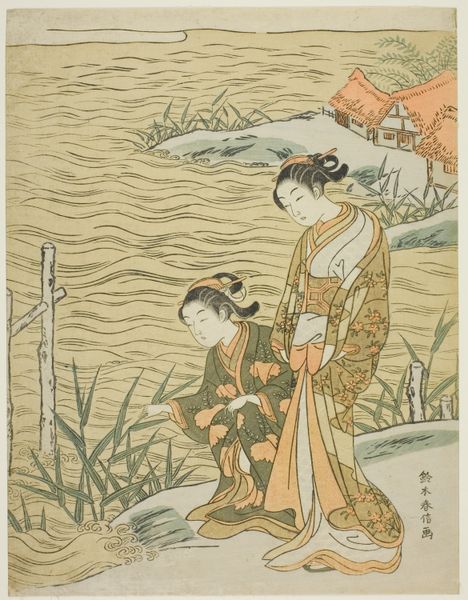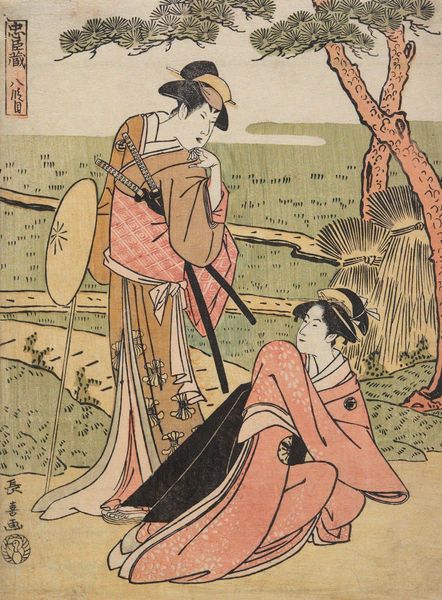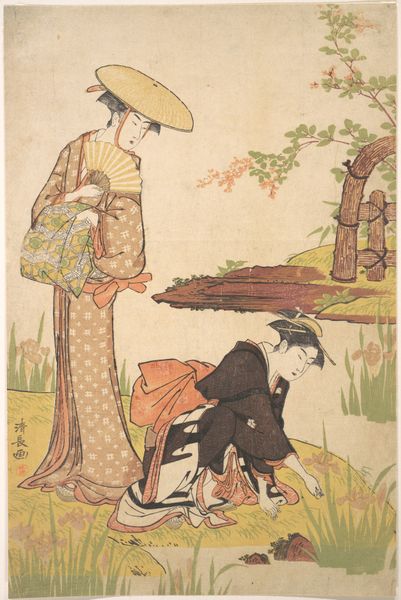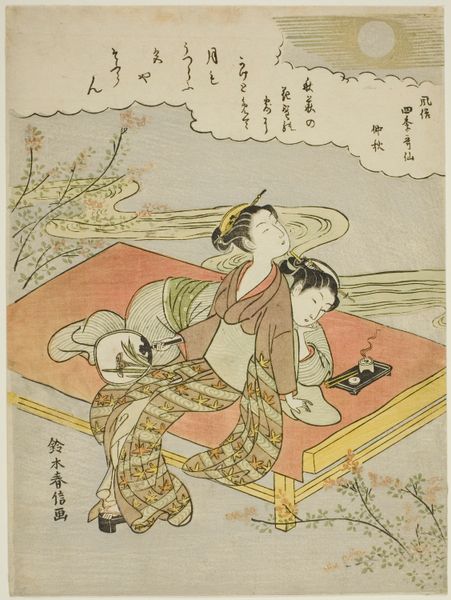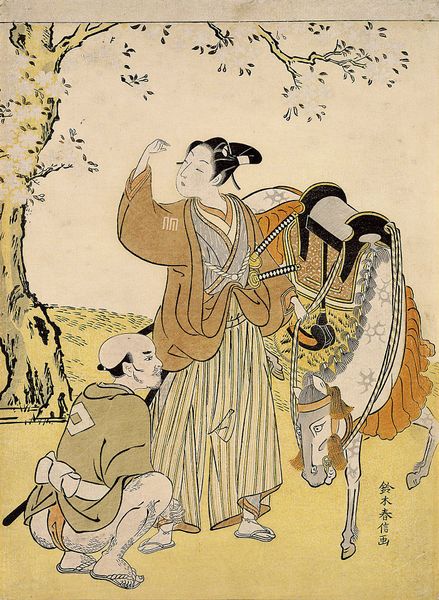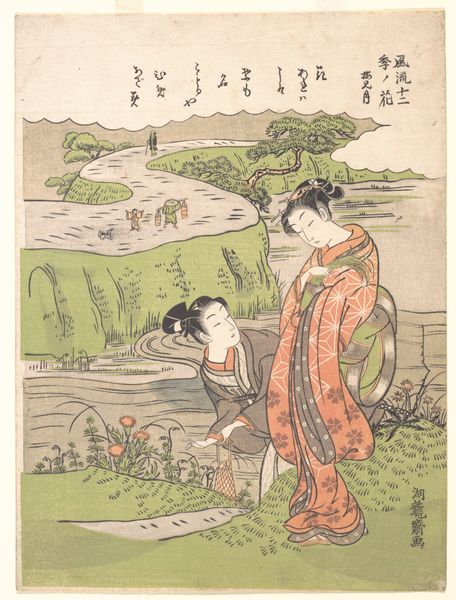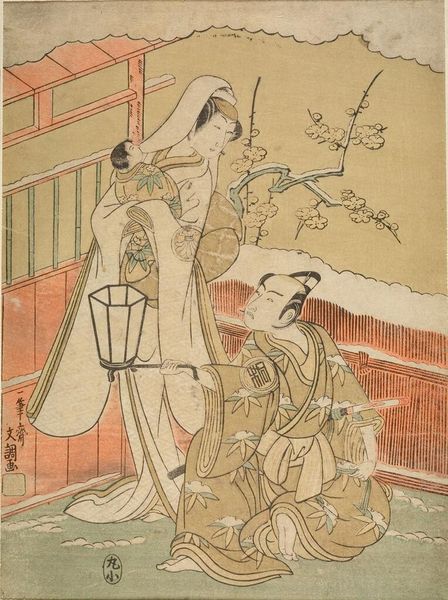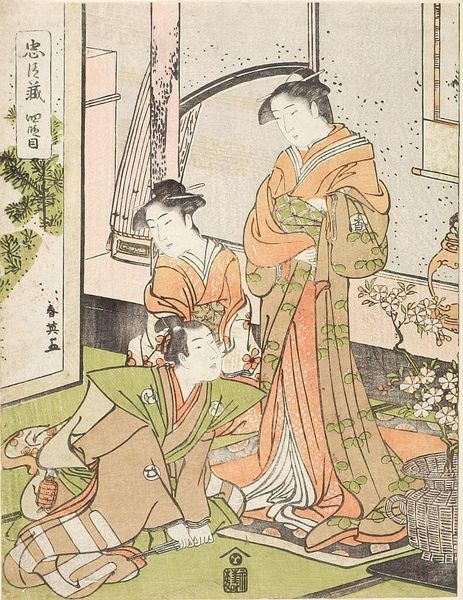
Eight-Plank Bridge (parody of "Tales of Ise") c. 1767
0:00
0:00
# print
#
asian-art
#
landscape
#
ukiyo-e
#
figuration
Dimensions: 28.7 × 20.8 cm (11 3/8 × 8 1/2 in.)
Copyright: Public Domain
Editor: This woodblock print, "Eight-Plank Bridge (parody of 'Tales of Ise')" created around 1767 by Suzuki Harunobu, presents a delicate scene of two women navigating a marsh. The gentle color palette and flat perspective feel very traditional, yet the composition, with its somewhat awkward bridge, also strikes me as playful. What's your interpretation of this work? Curator: The "awkward" bridge you perceive points towards an intriguing aspect of this print. It's a visual clue indicating the work is more than just a scenic representation. This ukiyo-e print playfully alludes to a well-known classical tale, "Tales of Ise," and that adds layers of meaning. Considering this print, how does its status as a mass-produced object influence its societal role? Editor: Knowing it's referencing another story adds a fascinating dimension, almost like a visual inside joke for contemporary viewers! Since it was mass produced, does it democratize art consumption, making it accessible to a wider audience than traditional painting? Curator: Precisely. The proliferation of ukiyo-e prints marks a crucial shift in art's accessibility. How might this increased access influence the public's understanding of classic tales like "Tales of Ise?" Were these prints acting as visual summaries or accessible commentaries on classic literature, therefore shaping how different social classes could interact with esteemed narratives? Editor: It’s almost like Harunobu is using popular culture to engage with and perhaps even subvert high culture. I’d never thought about the politics of woodblock printing. This has broadened my understanding of its importance. Curator: Exactly! Seeing art as enmeshed in a broader social and historical context changes everything. It's through considering questions of accessibility and interpretation that we discover its full richness.
Comments
No comments
Be the first to comment and join the conversation on the ultimate creative platform.
